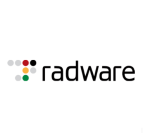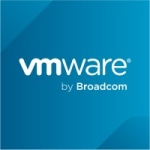What is our primary use case?
Our primary use case for this solution is to perform Layer 7 load balancing/reverse proxying of both our internal and external web applications.
We also use it for SSL offloading, and are beginning to utilize the basic Web Application Firewall functionality of it.
HAProxy also performs VRRP, for redundancy, in case one of the servers were to go down.
How has it helped my organization?
I estimate that this product has saved our company hundreds, if not thousands, of dollars in possible downtime from previous load balancers. We make a lot of our money from online sales, so it is critical to have 99.9% uptime.
What is most valuable?
The ease of use of the configuration, and great documentation, are the most valuable features for us.
The VRRP redundancy is also a mission-critical feature that works seamlessly. I can bring down a server live with minimal downtime because of this.
What needs improvement?
The only area that I can see needing improvement is the management interface, since it is pretty much all through the CLI or configuration. However, HAProxy does have another product that we evaluated called ALOHA, which has a web front-end, but we found it did not meet our needs.
Buyer's Guide
HAProxy
September 2025
Learn what your peers think about HAProxy. Get advice and tips from experienced pros sharing their opinions. Updated: September 2025.
868,787 professionals have used our research since 2012.
For how long have I used the solution?
Less than one year.
What do I think about the stability of the solution?
No stability issues. HAProxy Enterprise Edition has been rock solid. We have essentially had no downtime caused by our load balancers in the last 10 months, because they’ve worked so well. Previously, our load balancers caused us multiple hours per year in downtime.
I am also able to make configuration changes during the day, in production, with no worries of problems and/or downtime occurring.
What do I think about the scalability of the solution?
No scalability issues, but only because we do not deal with a lot of scale here. We simply rely on an active/passive configuration, so if a load balancer were to fail, we would have a backup instance ready to go.
How are customer service and support?
The technical support has been, in one word, perfect. Every time I call, I’m on the phone with a representative within five minutes who is highly skilled and willing to help, whether in the case of critical issues or simple advice. They always make me feel like I can pick up the phone just to have a good conversation about a new feature, a bug, a "what if" scenario, or anything else.
Which solution did I use previously and why did I switch?
We previously used Coyote Point load balancers, and then switched to Fortinet’s Application Delivery Controller, due to end-of-life on the Coyote Points. After a few months of major issues involving hours of downtime and slowness, we had to make a decision to move away from Fortinet. We chose HAProxy because of the open-source community behind it, and previous experience with it. We then decided to upgrade to the Enterprise Edition for the support they offer.
How was the initial setup?
The initial setup was fairly straightforward. With a minimal configuration, you can get up and going quickly. However, it is very easy to modify the configuration to meet any requirements you may have, and reload in production with no downtime. The only complex part is having to maintain the base operating system, as HAProxy EE is simply a Linux package. The hardening of the operating system was done by myself since there is no appliance, like their ALOHA offering.
What's my experience with pricing, setup cost, and licensing?
The price is well worth it. HAProxy Enterprise Edition paid for itself within months, simply due to the resiliency it brings. It was a bit more expensive than we were originally interested in paying, but we are thankful we chose to go with HAProxy.
Which other solutions did I evaluate?
We did not evaluate any other options. We considered looking at Barracuda’s offerings, but after a few days of evaluating HAProxy, we decided that it would be the best fit for us.
What other advice do I have?
I would rate this product a nine out of 10. I only took off one point because of the lack of a GUI, although in this case I would say that I prefer the CLI and configuration, which is primarily how we manage it. A GUI/web interface could be helpful for users who are not as experienced in the Linux shell.
Be sure you are familiar with the Linux command line and have networking knowledge. Specifically, VRRP is helpful to understand the high-availability aspect of it. The documentation is very helpful, so be sure to follow their given best practices and configuration tips.
Disclosure: PeerSpot contacted the reviewer to collect the review and to validate authenticity. The reviewer was referred by the vendor, but the review is not subject to editing or approval by the vendor.

















